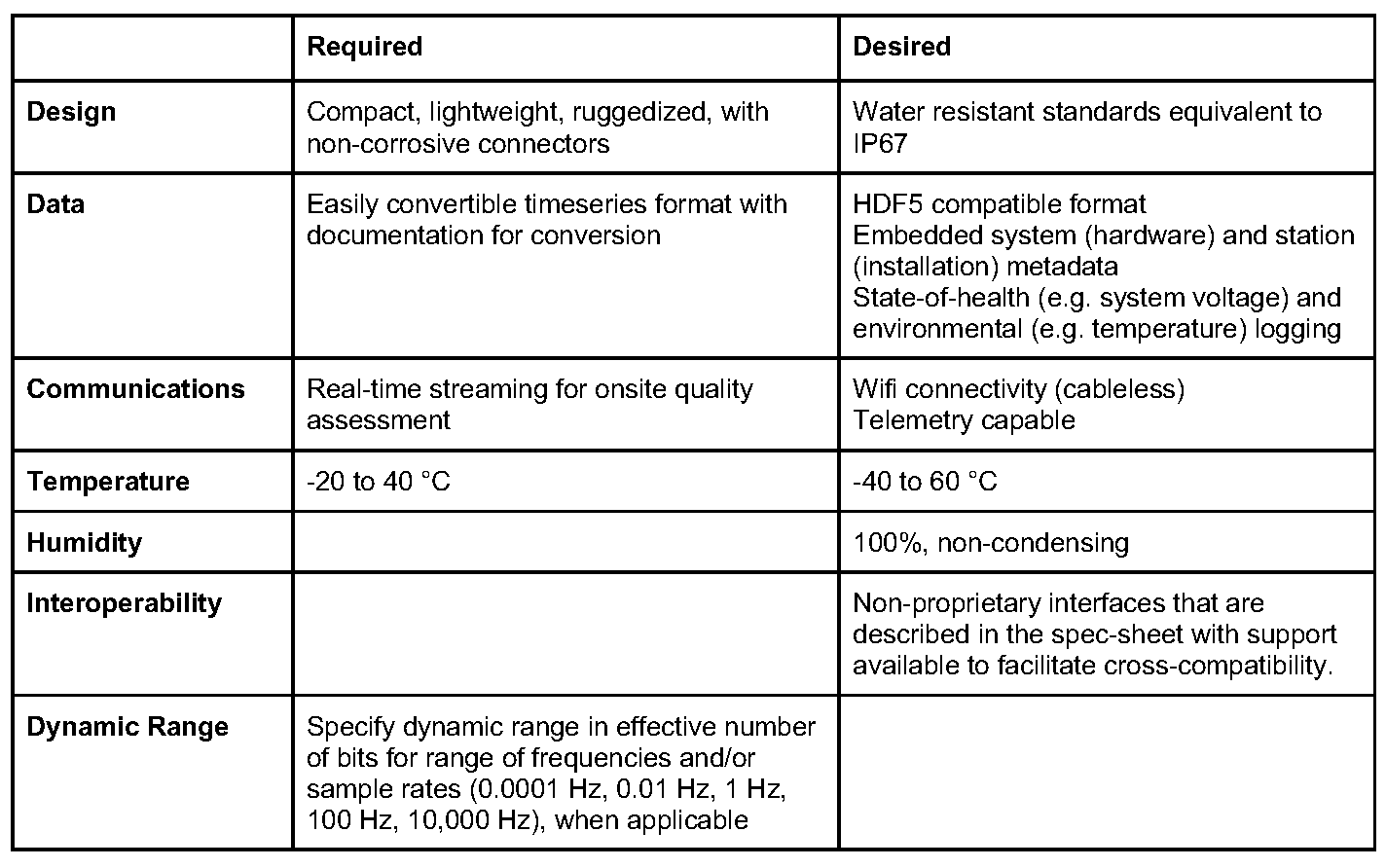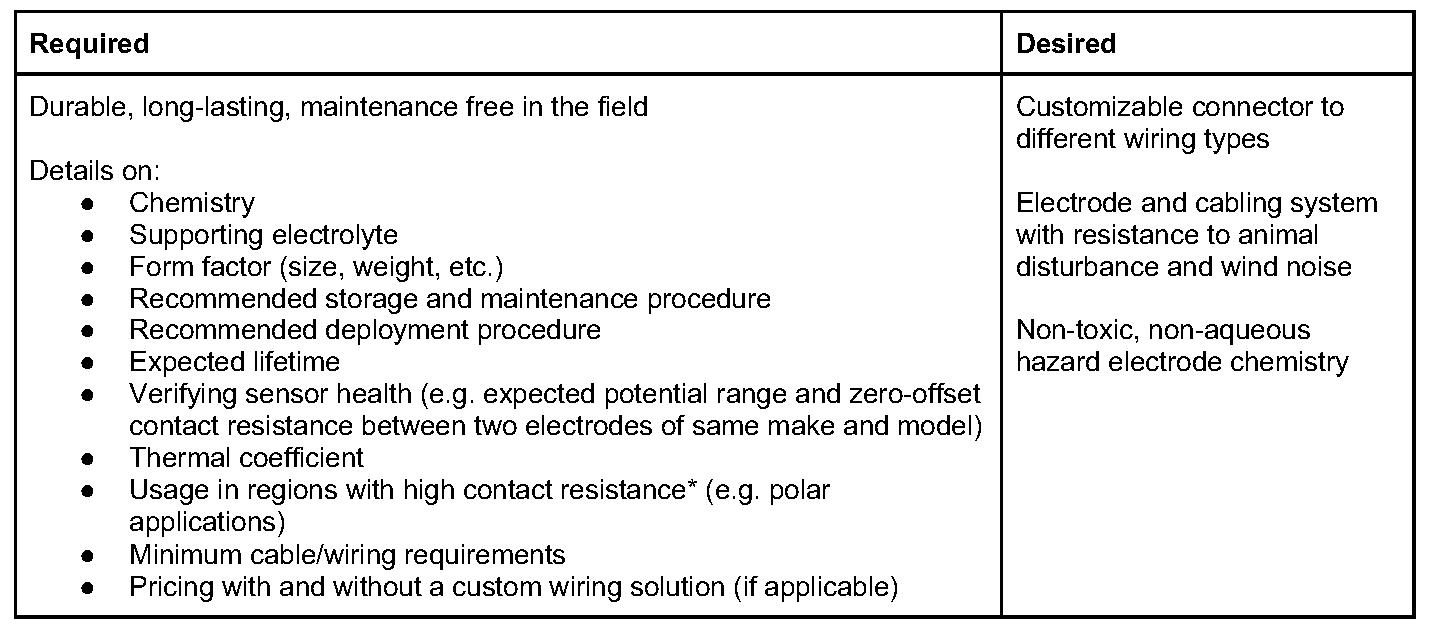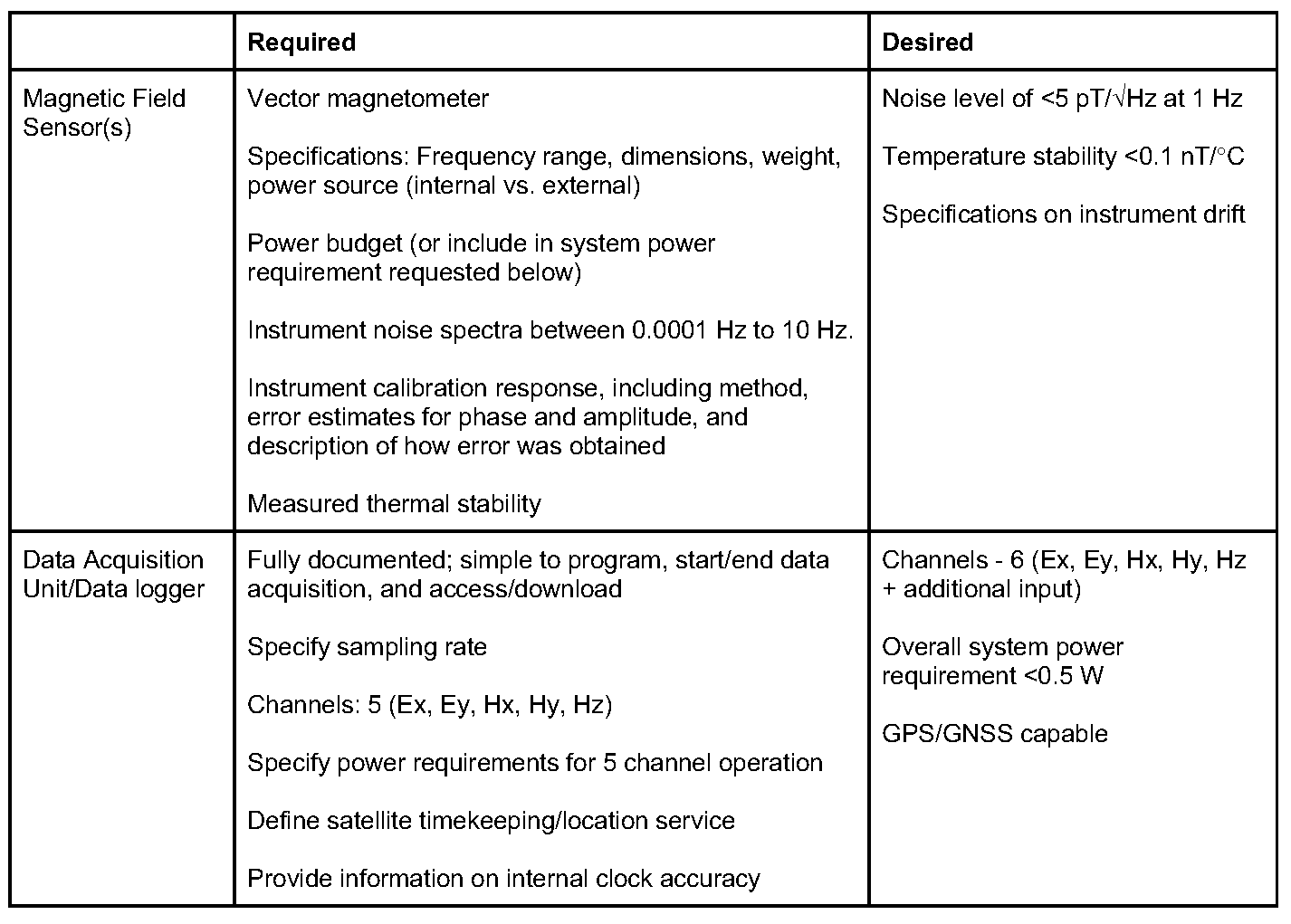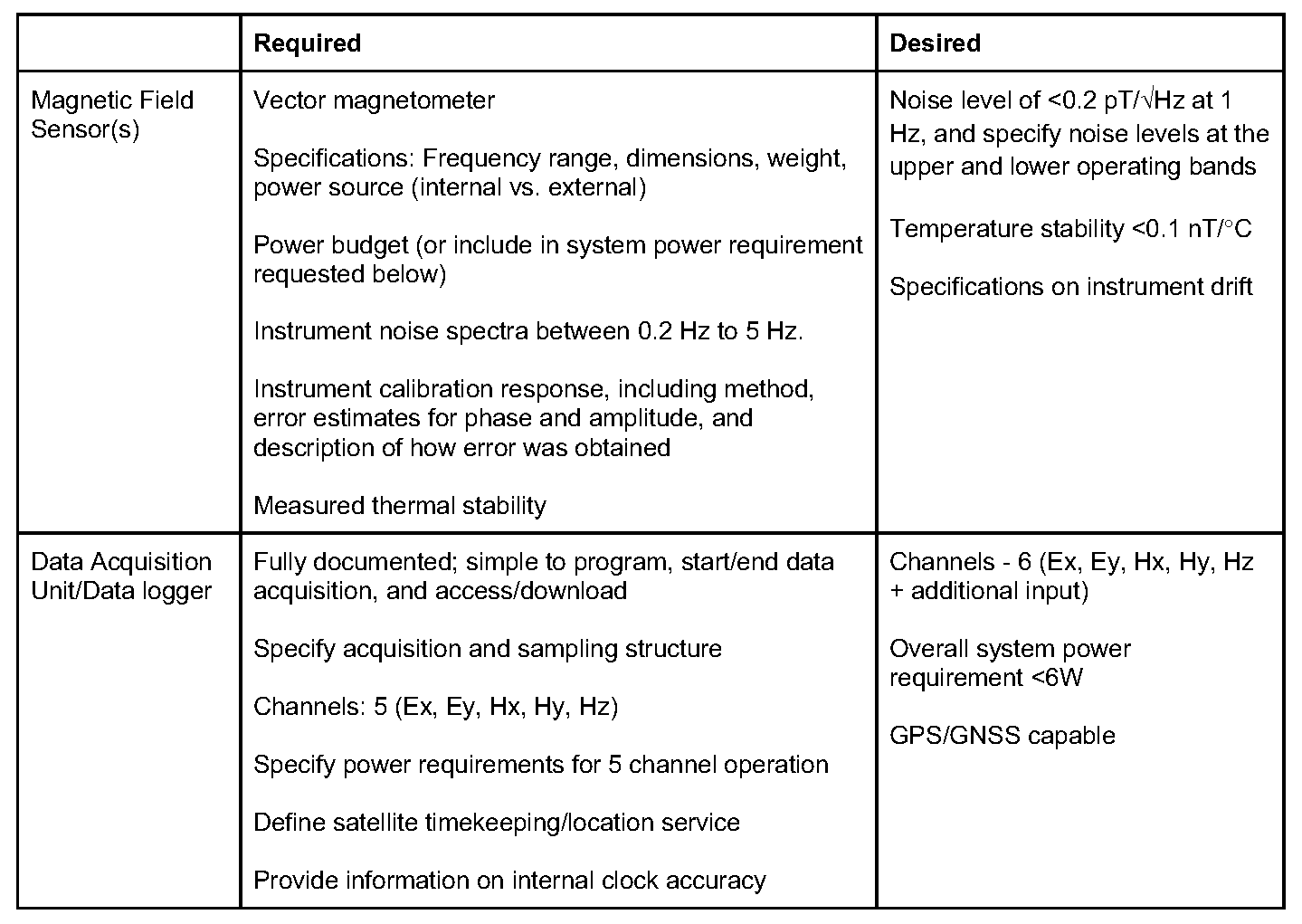Request for Information: Portable Instrumentation for Magnetotelluric (MT) Studies
The Incorporated Research Institutions for Seismology (IRIS) is a consortium of over one hundred U.S. universities dedicated to the operation of science facilities for the acquisition, management, and distribution of seismological data. IRIS programs contribute to scholarly research, education, earthquake hazard mitigation, and the verification of the Comprehensive Test Ban Treaty, in addition to the long-term stewardship of collected data. Primary support for IRIS comes from the National Science Foundation (NSF) through cooperative agreements and grants. Other sources of funding may include federal agencies, universities, private foundations, and individual donations.
IRIS is currently establishing a new pool of portable instrumentation for magnetotelluric (MT) studies at the PASSCAL Instrument Center (PIC) as part of the NSF-funded NSF SAGE facility. More information on this activity can be found here.
The MT instruments at the PIC will be used by Principal Investigators (PIs) to perform geophysical surveys in a variety of environments. We expect most PIs will be funded by the National Science Foundation and other national and international funding agencies. Specifically, IRIS will facilitate community access to:
- Magnetotelluric data loggers
- Magnetic field sensors, e.g. fluxgates and/or induction coils
- Electric-dipole receivers, e.g. electrodes and cabling
- Comprehensive PI training and dirt-to-desktop dataflow tools enabling the acquisition, processing, and archival of MT data and data products
IRIS plans to procure prototype units in the second half of 2019, perform testing and evaluation through early 2020, and procure an initial pool of instruments from 2020-2023. We would like to maximize the size of the PASSCAL MT pool for a variety of applications and are targeting a procurement size of 25-35 complete MT systems. IRIS is particularly interested in hardware and instrumentation that may be interoperable between manufacturers.
The following tables outline the required and desired characteristics for the various MT instruments we seek, grouped by subsystems. IRIS welcomes responses from vendors on what offerings are suitable in terms of performance and availability. Vendors should also respond if there is a specific instrument solution that is not fully captured by the proposed characteristics or does not meet all desired specifications. All responses will remain confidential with IRIS and the subaward facility staff and MT governance.
Please send responses and questions to Andrew (Andy) Frassetto. Responses are due by August 16, 2019.
Download the Request for Information.
Proposed Key Features and Capabilities of Instruments

Electrodes/Electric Dipole Receivers

*We are interested in optional configurations that include buffer-amplifiers and other systems for making electric field observations in environments with extremely high contact resistances.
Long Period System

Wideband System

IRIS also requests the following information:
- Terms for loan and/or lease of instruments for testing and evaluation
- Price points for:
- 1, 5, 10, 15, 20 wideband data loggers
- 1, 5, 10, 15, 20 long-period data loggers
- 3, 15, 30, 45, 60 single component magnetic field sensors
- 1, 5, 10, 15, 20 three-component magnetic field sensors
- 5, 25, 50, 75, 100 electrodes/electric dipole receivers
- Units deliverable per year
- Service and support models
- Lead times for purchasing and servicing
- Mean time between failures
- Process to document and share problem reports and firmware updates with users
- Scope of instrument interface and data processing software
- Description of software licensing models and flexibility
- System tolerances for surges/lightning
- Range of supply voltage


